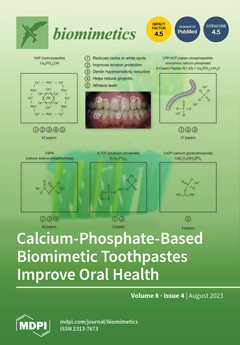There is no doubt that the involvement of the Internet of Things (IoT) in our daily lives has changed the way we live and interact as a global community, as IoT enables intercommunication of digital objects around us, creating a pervasive environment. As
[...] Read more.
There is no doubt that the involvement of the Internet of Things (IoT) in our daily lives has changed the way we live and interact as a global community, as IoT enables intercommunication of digital objects around us, creating a pervasive environment. As of now, this IoT is found in almost every domain that is vital for human survival, such as agriculture, medical care, transportation, the military, and so on. Day by day, various IoT solutions are introduced to the market by manufacturers towards making our life easier and more comfortable. On the other hand, even though IoT now holds a key place in our lives, the IoT ecosystem has various limitations in efficiency, scalability, and adaptability. As such, biomimicry, which involves imitating the systems found in nature within human-made systems, appeared to be a potential remedy to overcome such challenges pertaining to IoT, which can also be referred to as bio-inspired IoT. In the simplest terms, bio-inspired IoT combines nature-inspired principles and IoT to create more efficient and adaptive IoT solutions, that can overcome most of the inherent challenges pertaining to traditional IoT. It is based on the idea that nature has already solved many challenging problems and that, by studying and mimicking biological systems, we might develop better IoT systems. As of now, this concept of bio-inspired IoT is applied to various fields such as medical care, transportation, cyber-security, agriculture, and so on. However, it is noted that only a few studies have been carried out on this new concept, explaining how these bio-inspired concepts are integrated with IoT. Thus, to fill in the gap, in this study, we provide a brief review of bio-inspired IoT, highlighting how it came into play, its ecosystem, its latest status, benefits, challenges, and future directions.
Full article






